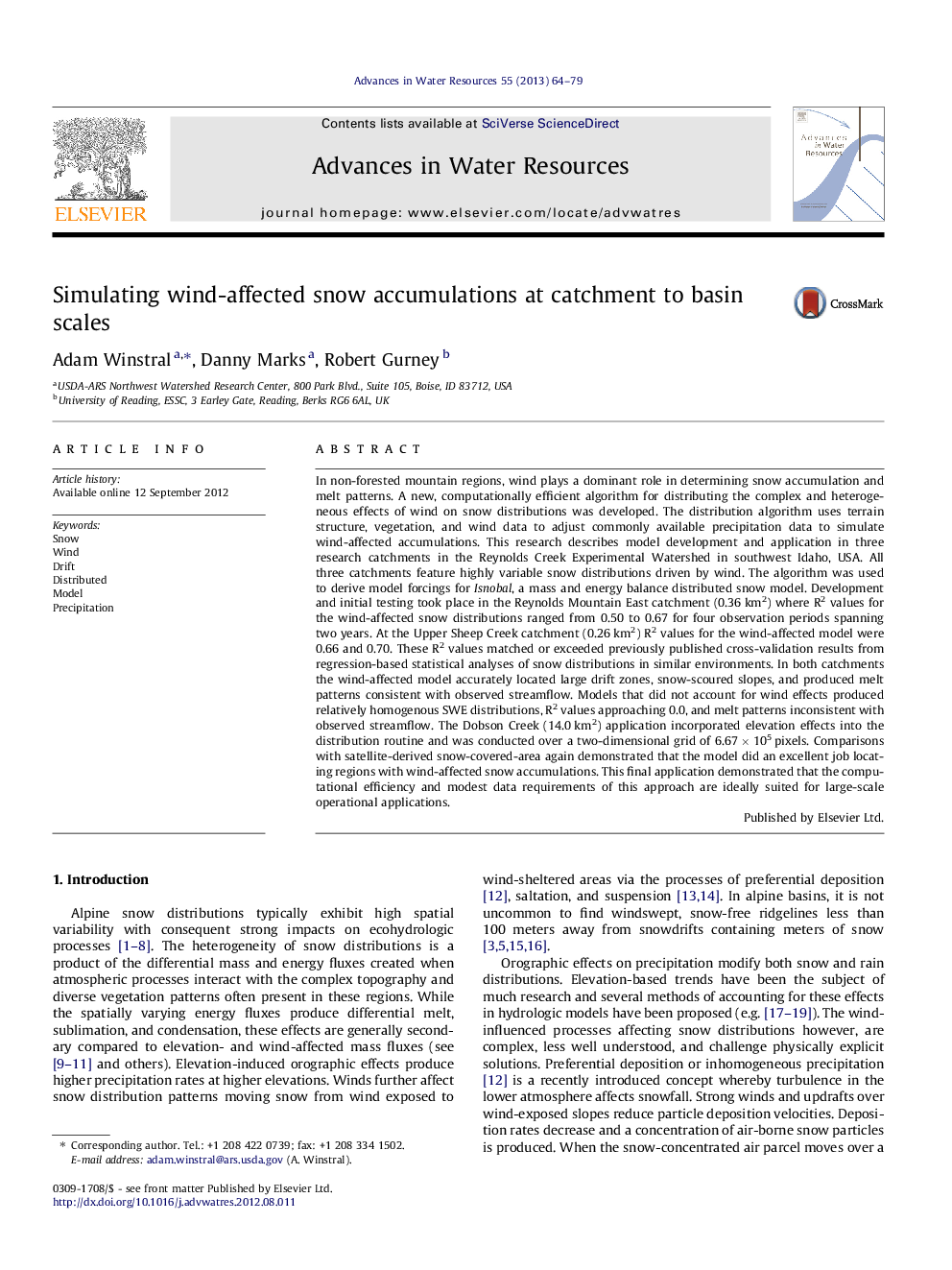| Article ID | Journal | Published Year | Pages | File Type |
|---|---|---|---|---|
| 4525651 | Advances in Water Resources | 2013 | 16 Pages |
In non-forested mountain regions, wind plays a dominant role in determining snow accumulation and melt patterns. A new, computationally efficient algorithm for distributing the complex and heterogeneous effects of wind on snow distributions was developed. The distribution algorithm uses terrain structure, vegetation, and wind data to adjust commonly available precipitation data to simulate wind-affected accumulations. This research describes model development and application in three research catchments in the Reynolds Creek Experimental Watershed in southwest Idaho, USA. All three catchments feature highly variable snow distributions driven by wind. The algorithm was used to derive model forcings for Isnobal, a mass and energy balance distributed snow model. Development and initial testing took place in the Reynolds Mountain East catchment (0.36 km2) where R2 values for the wind-affected snow distributions ranged from 0.50 to 0.67 for four observation periods spanning two years. At the Upper Sheep Creek catchment (0.26 km2) R2 values for the wind-affected model were 0.66 and 0.70. These R2 values matched or exceeded previously published cross-validation results from regression-based statistical analyses of snow distributions in similar environments. In both catchments the wind-affected model accurately located large drift zones, snow-scoured slopes, and produced melt patterns consistent with observed streamflow. Models that did not account for wind effects produced relatively homogenous SWE distributions, R2 values approaching 0.0, and melt patterns inconsistent with observed streamflow. The Dobson Creek (14.0 km2) application incorporated elevation effects into the distribution routine and was conducted over a two-dimensional grid of 6.67 × 105 pixels. Comparisons with satellite-derived snow-covered-area again demonstrated that the model did an excellent job locating regions with wind-affected snow accumulations. This final application demonstrated that the computational efficiency and modest data requirements of this approach are ideally suited for large-scale operational applications.
► New, computationally efficient model accounts for wind-affected snow accumulations. ► Model has limited data requirements. ► Modeled SWE distributions more accurate than prior models. ► Distributed snow model suitable for operational forecasting.
